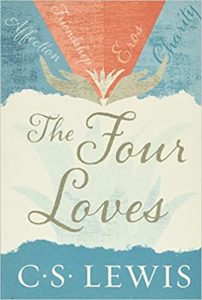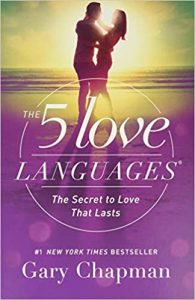
I’m not really sure exactly how I feel about February. It is sort of an in-between month. The shortest one nestled deep in winter, and also a month you hope goes by quickly so that spring might surface sooner. And, wedged right in the middle of the month is St. Valentine’s Day — the greeting card celebration in recognition of love that is cringe-worthy to some, pressure inducing to others, and downright adorable to those who are besotted by love.
And therein lies the connection to this second month of the year. February holds themes of love, heart-health, and lest we not forget, the weather-foretelling, shadow-hunting, groundhog.
Touching on the subject of love is ambitious. I believe love is one of the most complex and intimate of topics. In matters of the heart, mind, and soul, there is much yet to be understood.
This month, I’m featuring two books and part of Rumi’s magnificent poem, The Great Wagon.

Let’s start with an exert from Rumi’s poem:
“Out beyond ideas of wrongdoing and rightdoing,
there is a field. I’ll meet you there.
When the soul lies down in that grass,
the world is too full to talk about.
Ideas, language, even the phrase “each other”
doesn’t make any sense.
The breeze at dawn has secrets to tell you.
Don’t go back to sleep.
You must ask for what you really want.
Don’t go back to sleep.
People are going back and forth across the doorsill
where the two worlds touch.
The door is round and open.
Don’t go back to sleep.”
Rumi’s poem highlights the complexity that touches upon the essence of love as something not black or white, but rather spiritual, essential, and meaningful. In my opinion, Rumi distills love to its core and crystallizes the heart of what many who write about the topic attempt to capture in their work.
I’ve chosen The Four Loves by C.S. Lewis and Dr. Gary Chapman’s The Five Love Languages as this month’s featured books. Both authors write with a philosophical and theological undertone so if that is off-putting to you, please just pass ‘Go’ as these books might not be your cup of tea.
The Four Loves
In The Four Loves, the author of such well-known works as: The Chronicles of Narnia, The Screwtape Letters, and The Great Divorce, examines the main forms of love and why we need and appreciate it. He helps us, the reader, analyze the different types of love received, given, and felt by humans.
 They include:
They include:
- Affection (Greek: Storge); I quite like this quote that Lewis uses to describe affection as the humblest of loves and as one that “oils the wheels of life”.
Affection would not be affection if it was loudly and frequently expressed;
to produce it in public is like getting your household furniture out for a move. It did very well in its place, but it looks shabby and tawdry or grotesque in
the sunshine. Affection almost slinks or seeps through our lives. It lives
with humble, un-dress, private things; soft slippers, old clothes, old jokes, the thump of a sleepy dog’s tail on the kitchen floor, the sound of a sewing- machine, a toy left on the lawn.
- Friendship (Greek: Phileo); Lewis unpacks friendship as one of life’s non-essentials in a way that many may not have previously considered — as a truth shared and a commonality. He writes,
In our own time Friendship arises in the same way. It may be a common religion, common studies, a common profession, even a common recreation. All who share it will be our companions; but one or two or three who share something more will be our Friends. In this kind of love, as Emerson said, Do you love me? means Do you see the same truth?
- Erotic Love (Greek: Eros); Lewis describes Eros so insightfully through this quote,
“Better this than parting. Better to be miserable, with her than happy without her. Let our hearts break provided they break together. If the voice within us does not say this, it is not the voice of Eros.”
- Selfless Love (Greek: Agape). Lewis calls this the highest form of love as there is no attraction associated with it. The other forms of love have some connection to a sense of personal attraction or a reason someone cares for another person.
Lewis explores the light and dark side of the four loves including what makes a friend and a lover and how jealousy and possessiveness can spiral a relationship out of control.
To read more, please check out the book online at Amazon.com or through Audible.com.
The Five Love Languages
Next up is The Five Love Languages by Dr. Gary Chapman. This book has been around for a number of years. In the last month or so, I did a little experiment and asked my friends if they had read the book and knew their love language. I wasn’t surprised to find that almost all of them had read the book and quickly shared their preferred love language with me.
If you haven’t yet read the book, I’ve included a link to the PDF of the love languages profile workbook so you can find out your love language.
What are the Five Love Languages?
Not sure what I’m talking about? Here are the five love languages that Chapman describes in his best-selling book:

- Words of Affirmation
- Quality Time
- Receiving Gifts
- Acts of Service
- Physical Touch
Chapman explores each language in detail and provides ways to deal with blind spots and assumptions in our expression of love and how it might pose a challenge when our love language isn’t that of our intended recipient. You might appreciate physical touch as your top love language whereas your partner’s preference is through words of affirmation. It isn’t hard to see where conflict and confusion may come into play if there is a constant disconnect between how you’re showing love and how your loved one prefers to receive love. While the concept seems quite simple, for many, reading this book or learning about the five love languages creates a lightbulb moment of insight and awareness.
To read more, please check out the book online at Amazon.com or through Audible.com.
TEDxDouglas: Mia Hannson’s Journey Through the Heart
Finally, I’d like to share a TEDxDouglas video with you. It is called, What is Love? A Journey Through the Heart, by Mia Hansson. This 14-minute video is unpolished, vulnerable, and very real. Mia takes us on a personal journey and expands on the various forms of love.
By sharing these various forms of creative expression, I’ve attempted to cover a multi-dimensional view of love’s major elements.
Love might be as simple as a butterfly on your shoulder or as life-altering as being pulled from a burning building.
All I really know is that when all is said and done — love is all you need.



